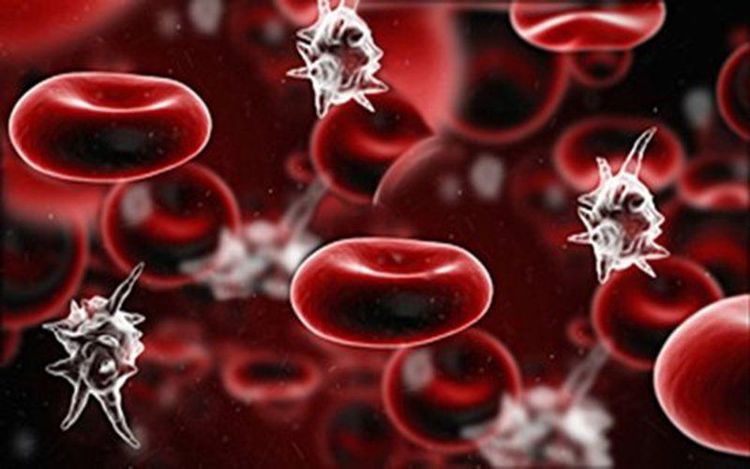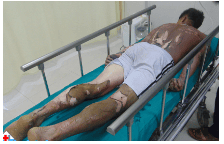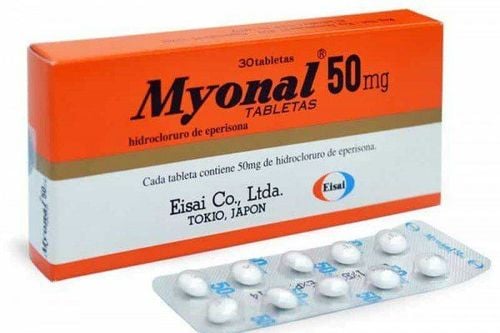This is an automatically translated article.
The article was professionally consulted by Specialist Doctor I Huynh Kim Long - Emergency Resuscitation Doctor - Emergency Resuscitation Department - Vinmec Da Nang International General Hospital. Dr. Huynh Kim Long has extensive experience in the treatment of Resuscitation - Emergency and Acute Stroke in adults.1. What is shock? Clinical manifestations of shock.
Shock is a circulatory disorder resulting in acute hypoperfusion of tissues. Shock causes symptoms such as: tachycardia, tachycardia, lowering or clamping blood pressure, tachypnea, constriction, sweating, cold extremities, skin rash, sweating, prolonged capillary filling time, lethargy , restlessness, signs of cerebral hypoxia, hepatosplenomegaly in case of septic shock.Specifically, the clinical symptoms are as follows:
Neurological symptoms
The patient is initially in a state of excitement, then becomes inhibited, reflexes are reduced, knowledge remains.
Symptoms of the whole body
Pale face, purple extremities, bruised patches on the skin, when pressed, it fades and slowly returns to the same. Cold, sweaty person.
Circulatory symptoms
Tachycardia, hypotension, congestion and fluctuating. There may be no pulse or blood pressure. Negative central venous pressure in septic shock, anaphylaxis, or hypovolemic shock.
Shock due to acute heart failure or cardiac tamponade accompanied by acute pulmonary edema, distended jugular veins.

Respiratory symptoms
Rapid breathing rate, leading to CO2 reduction, the later the breathing becomes faster and shallower.
Urinary symptoms
Decreased urine output due to constriction of the trunk blood vessels.
Biochemistry
Metabolic acidosis, increased blood potassium.
2. Common types of shock
Traumatic shockIs a state of prolonged systemic collapse due to surgical trauma or burns. The patient has obvious clinical manifestations such as: circulatory failure, decreased cardiac output, body hypoxia. Thus, traumatic shock is different from cases of temporary drop in blood pressure during surgery, anesthesia, drug use,...
Based on clinical development, traumatic shock is divided into several types:
Erectile shock
Disease patients in a state of stimulant reactions, rapid pulse, increased blood pressure, rapid breathing,... usually in the first 10-30 minutes.
Asthenic shock
The central nervous system is inhibited, leading to a decline in systemic reactions, asthenic shock is divided into progressively more severe levels, the prognosis and treatment are also more difficult.
Reversible and irreversible shock
If traumatic shock, with prolonged lack of oxygen causing irreversible damage, begins in the brain and extends to all other organs. Reversible and irreversible shock depends on blood supply and damage to vital organs.
Septic shock
Septic shock can be caused by many types of bacteria, of which gram-negative bacilli are the most common (accounting for 70% of cases). But gram-positive bacilli usually cause more severe shock.
Some bacteria cause shock such as:
Gram-positive: Staphylococcus, Streptococcus, pneumococcus, CloStridium Perfringeus, CloStridium Tetani,... Gram-negative: Kleb Siella, Proteus, Escherichia Coli, Pseudo0monas,... Patients with septic shock have Symptoms such as:
Infection syndrome: high fever or hypothermia, chills, increased white blood cell count and left shift. Respiratory disorders: tachypnea, respiratory alkalosis, hypoxemia. Circulatory disorders: arterial hypotension, tachycardia, arrhythmias, microcirculation disorders,... Multi-organ failure: Acute renal failure, liver failure, neurological disorders, coagulopathy syndrome blood, ARDS syndrome.

This is shock caused by a lack of oxygen in the tissues, reducing the circulating volume (blood pressure). Patients may experience shock due to relative or absolute hypovolemia, but both cause the heart to beat faster to compensate, causing decreased cardiac output.
Hypovolemic shock also causes cellular hypoxia, forcing prolonged anaerobic cellular respiration leading to cell damage and necrosis. This type of shock is especially dangerous in the elderly with atherosclerosis, because it can easily lead to brain, kidney, heart damage and life-threatening complications.
Patients with hypovolemic shock have clinical symptoms due to blood loss such as:
Fast, small pulse, low blood pressure, low central venous pressure; Mucous skin cold, pale, knees with purple patches; Struggling, lethargic, confused; Thirst, little urine, anuria; Rapid breathing, purple lips and extremities; Lower temperature. Anaphylaxis
Anaphylaxis caused by drugs and toxins, possibly colloidal shock. Usually, people with anaphylaxis go into anaphylaxis after eating, drinking something, being stung by something, biting or injecting a certain drug after a few minutes - 30 minutes.
Patients with anaphylaxis have typical symptoms: bronchospasm, increased vascular permeability causing laryngeal edema, respiratory failure, edema and hypotension, respiratory failure. If not treated properly, these symptoms can quickly lead to death. In addition, there may be some accompanying symptoms such as: abdominal pain, vomiting, diarrhea, shortness of breath,...
Thus, shock can be caused by many causes, it is necessary to properly diagnose for effective treatment. fruit. Prognosis depends on the cause, effective intervention, and individual background. If you have any health problems, it is best to go to a medical facility to be examined by a doctor.
Please dial HOTLINE for more information or register for an appointment HERE. Download MyVinmec app to make appointments faster and to manage your bookings easily.














